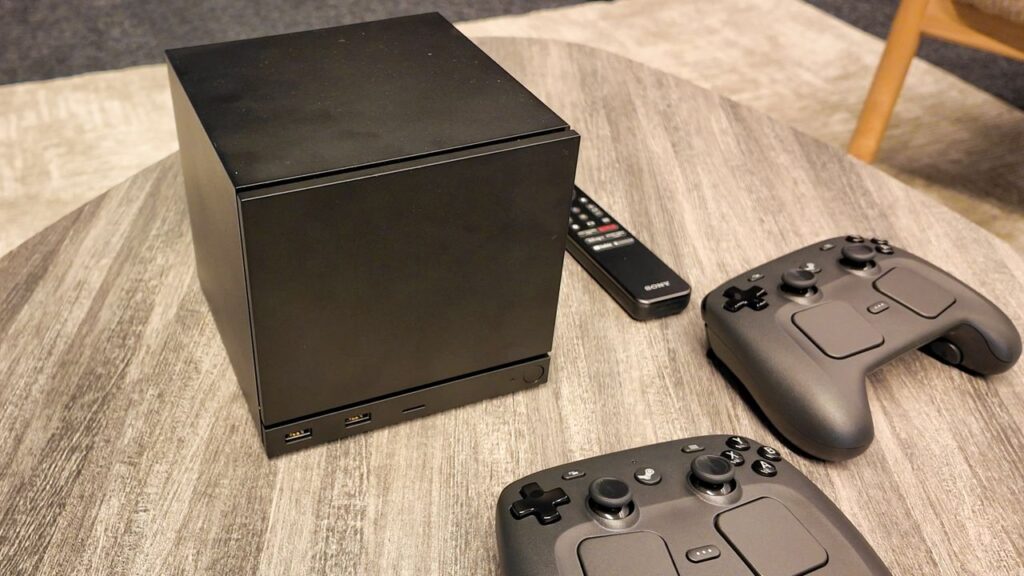
Valve is set to launch its new Steam Machine in early 2024, aiming to create a dedicated gaming desktop that leverages its innovative SteamOS. The company is promoting this new device as an opportunity to establish a new standard for SteamOS desktops, emphasizing its potential to support high-performance hardware such as the RX 9070 XT.
During a recent visit to Valve’s headquarters, engineer Yazan Aldehayyat expressed confidence in the timing of this launch, stating that advancements in SteamOS and the Proton conversion layer have paved the way for a more robust gaming experience on Linux. “We think the original Steam Machines were a cool product. Obviously, they didn’t quite work out,” he said, reflecting on the challenges faced a decade ago. “But, in a lot of ways, we feel like now is the right time for us to make this device.”
One significant factor contributing to this renewed optimism is the success of the Steam Deck, which has demonstrated the viability of handheld gaming PCs. Aldehayyat noted that the Steam Deck’s popularity highlights the demand for a versatile gaming experience that can transition smoothly between living room and desktop setups. “We knew that our customers loved the SteamOS experience with the Steam Deck, and we just want to give them that same convenience in a different form factor,” he explained.
SteamOS and Future Possibilities
Valve’s strategy involves not just producing the Steam Machine, but also encouraging third-party developers to create their own versions using SteamOS. Aldehayyat mentioned, “Just like with the Steam Deck, we’re really interested to see what other companies do with the form factor.” This openness could lead to a variety of high-end alternatives, expanding the ecosystem around SteamOS.
The Steam Machine aims to serve as a showcase for what’s feasible in a compact, affordable device, though specific pricing has yet to be announced. Valve hopes to attract modders and everyday PC gamers to experiment with SteamOS on various hardware configurations. While there are already numerous high-performance mini PCs available, the challenge for Valve will be to expand driver support for SteamOS to ensure compatibility with a broader range of graphics cards, particularly from Nvidia and Intel.
According to Pierre-Loup Griffais, a software engineer at Valve, “The driver that we use for AMD hardware is actually a driver that we develop in-house.” He acknowledged that catching up with support for Nvidia and Intel products will take time, but he remains optimistic about the potential of SteamOS on powerful hardware configurations.
Market Impact and Consumer Reception
The introduction of the Steam Machine comes at a time when many gamers are exploring alternatives to traditional operating systems like Windows 11. Valve’s focus on performance optimization for SteamOS may resonate with users seeking a more tailored gaming experience. Yet, the market for small form factor PCs is competitive, and Valve faces the challenge of convincing consumers of the benefits of switching to SteamOS.
The Steam Machine represents a calculated risk for Valve. While the company has previously faced setbacks with its hardware initiatives, the success of the Steam Deck and the evolution of SteamOS suggest a more promising landscape. As Aldehayyat noted, “There’s a lot of people who build their own Steam Machines right now.” This community-driven enthusiasm could play a crucial role in the acceptance of the Steam Machine.
As the gaming industry anticipates the arrival of this new device, the broader implications for the SteamOS ecosystem may be significant. If successful, the Steam Machine could lead to increased developer interest and innovation, ultimately enriching the gaming experience for a diverse audience. For now, Valve appears poised to test the waters with this launch, potentially marking the beginning of a new chapter in PC gaming.






